#synergy
Text


Synergy Appears! Two page comic just to practice doing comic pages again.
193 notes
·
View notes
Text

#gif#cartoon#old cartoons#jem and the holograms#jem#concert#hologram#computer#singing#singer#80s#80s aesthetic#vaporwave#lofi#retro#neon#synergy
285 notes
·
View notes
Text
Who’s your FS/SO……❓❓❓❓ PAC
🙋🏾♀️🙋🏾♀️🙋🏾♀️🙋🏾♀️🙋🏾♀️🙋🏾♀️🙋🏾♀️🙋🏾♀️🙋🏾♀️🙋🏾♀️🙋🏾♀️🙋🏾♀️🙋🏾♀️🙋🏾♀️🙋🏾♀️🙋🏾♀️🙋🏾♀️💟💟💟💟💟💟💟💟💟💟💟💟💟💟💟💟💟💟💟💟☂️☂️☂️☂️☂️☂️☂️☂️☂️☂️☂️☂️☂️☂️☂️☂️☂️☂️☂️☂️☂️☂️☂️☂️☂️☂️☂️☂️☂️☂️☂️☂️☂️☂️☂️☂️☂️

Your Selections 🧞🧞🧞🧞

Pile 1

Tarot Cards: 10oS, 2oP, 5oC, 8oC
You may go through some sort of loss, and or this may be them. This may also resonate as a rejection of the sort as well. ( either you or this person) So this may be a rejection or some type of loss you or your person goes through. They may live in New York specifically, (I’m getting this for some) or some type of urban area where there’s a city nearby. They may bring in a wealth of opportunities for you…they may also just be a wealthy man/woman in general. They have deep pockets and often provide opportunities to and for you…this is to help you move past the traumas, heartbreaks, and grief…they know how to turn loss into a money earning opportunity. (They are good at making something out of nothing) You may receive a promotion or they may have just received one…you see them as a grounding and stable force. There a bit insecure and don’t like to celebrate or go out much…even when your person receives the promotion they would rather stay inside to themselves and relish. This comes from a place of insecurity because they don’t allow themselves to enjoy the fruits of their labor…like going outside and mingling. This person has had a lot of loss and grief in their life. They think about their goals a lot and how they will achieve these goals….Even if they do they don’t/wouldn’t know where to go or what to do from there. They have been ignoring the ace of pentacles that was right in front of them. There is a sense of fear of the unknown and not know where to go. You both love one another and there’s a great amount of passion between the two of you…you may not like a lot of the same things but you both seem to blend without trouble. You have harmony and balance with this person…this is truly someone who is a divine counterpart…this is a soulmate….you will both feel very comfortable with one another….you teach one another how to let go specifically this person. Allowing control to be relinquished and allowing life to take you where it takes you…this is something your spouse/so will learn from you…they have a hard time finding balance between their life and their career. They could be behind at work right now…they feel trapped…whatever they’re going through is really hard on them at the moment they need rest. I just want to hug your person pile 1 🥺.
Where you may meet them..?
So I’m getting three scenarios.You may meet them when you are traveling…possibly on a hike of some sort or a mountainous area. For others I’m getting may meet them in the court of law 👩🏾⚖️ (lolllll I’m rolling)…possibly outside of a place where law or justice occurs…police department 👀. And the third is like at a big garden…botanical gardens perhaps…they may even be a neighbor of yours. You may both be walking away from something that no longer serves you…you may even feel an injustice has occurred. You will move away from this energy with time. You may also meet at the workplace. Once you meet the hard work you put in will finally pay off.
Extra Messages: 1313, overthinking, loss, soul contract, 11, Christmas 🎄, winter
Pile 2

Tarot Cards: 3oSrv, AoC, Strength, 4oS
The first thing I heard was courageous and brave. Your fs/so is very intuitive…they may at times be seen as lazy. But it’s the fact that they spend more time overthinking and, worrying then doing or putting forth actions. They are really good at whatever their career is but they have this feeling and tendency to not feel good enough for you or for they life they have. They are very connected to their emotions but often get deemed as a lazy person…they really just be procrastinating…they are extremely unfocused and can’t get work done….so much so they miss opportunities. They are constantly bouncing back and forth between a lot of unhealthy thoughts. They need to put in the effort that they know they can or they will continue to fall into thin bottomless self pitying habit. Thinking if you will like something they are doing for you…they are extremely obsessive about you and may be possessive as well. They’re constantly thinking and never really doing….they think they’re not good enough anyway so why even try. They will get into a thought process or habit and keep on thinking about. You both are compatible and there is a lot of love here between the go of you. They will offer you a lot of love…this may be my TWFL pile for some of you. They may have been betrayed in the past by someone or there bad habits chased pasted lovers away. You both will create an alliance together and truly be able to build a stable foundation and connection with each other.
Where you will meet..?
You may meet your future spouse/so at a gathering of the sort. I’m sensing a family gathering. (It reminds me of a yt video I was watching talkin about country ninjas havin a party yea yea yea🤣🤣) So your person may be southern Lml. It could be a family reunion or class reunion…you may have met this person prior to this gathering…you may even notice these obsessive characteristics…you feel they may a bit emotional immature. Pile 2 you may be walking away from fighting or fights into your new peace. A message from spirit {You are being offered something special and yet you reject it why..?} This person comes in with passion and mysteriousness that drew you in at first even though you may not have been very impressed by them. They are coming to offer you a cup of love!💜
Extra Messages: 555, 44, 55, celebration, celebrity, wild side normani, I wanna drive you crazy
Pile 3

Tarot Cards: QoSrv, QoP, PoSrv
This is definitely someone you know or someone that you used to know. There is an overarching nostalgia to this connection. Your fs/so my also be just very nostalgic in general…they like to dwell on the past but not in a toxic way. They have fond memories of their mother during their childhood…this person may not to work in groups 🤧👀…like they don’t do well having to anchor up multiple people. They like to work by themselves and be by themselves for the most part. They’re a straight shooter…what they say they mean what they mean they say and this is something they picked up from their father figure…your person’s parents have played a major role in their lives. Their dad was a very no nonsense type of person….while they aren’t like that they are very brunt which is why they may not be able to work in groups/ fond of working in groups…this person likes to hike or walk in peaceful spaces. They have had someone screw them over during there childhood…possibly may have been the mother for some. (13:13 on the clock) This person is very wise and has a lot of wisdom. But they have unhealthy habits to the point where they shut of when things aren’t going the way they intended for things to go. They have a more traditional approach to life. They are definitely a masculine energy. This person believes in the sanctity of marriage/partnership and, they will respect it as well as you. This could be related to the fact that they didn’t see their parents respect their marriage…they may have separated or gotten divorced…which highly affected your FS/SO. This effects how your FS/SO even interacts when they collaborate with others….or are involved in something requiring teamwork. This person will come in fast but very recklessly…they tend to make head first decisions without much thought or planning ahead. Even if they know the outcome will be bad. (Just be careful and take notice to this so they can work to correct this) You may have resonated or been drawn to pile 2. I say this because there’s an immaturity it’s just not an emotional immaturity. Like your FS/SO lacks maturity when it comes to thought….while pile 2 is emotionally lacking maturity. Their thought process May throw you for a loop 🫠🥴. In the past they had to walk away from something that was causing them grief and, along the way they began to develop this mentality. This may be there defense mechanism. (555) This is a person who can be very diplomatic when they view is necessary. They can create balance. This person is willing to take the middle ground and they’re willing to compromise. They’re willing to be the bigger person…even though their thought process may be a bit wonky they can control themselves. They know how to take control of their thoughts when they see fit or again the need to. They seem to not do will in social environments…they are very antisocial or just stand-offish.
Where you’ll meet them: You may meet your future spouse when it’s cold outside. It could be snowing for some of you. It may be around winter time…you also may just live in a very cold area. It’s a time where you’re feeling left out. You may feel as though you are not apart of something..? And they feel the same way…they want to be apart of something. You could be reaching out for help and they may be one of the people who help you. I going back to the snow…it could also be harsh weather conditions. You could feel as though your person takes their time with something….they may be doing something where you see them taking the time. They may even talk with at a slower pace. This will stand out to you. Even though this person is traditional the place you meet them will be anything but the sort. It will definitely be an usual place or environment. They usually wouldn’t have even gone to a place like this…..and yet they found themselves there. They could have rested or they were laid back in some way. This may be because they have had a victory and they’re soaking in the moment. But this place is not what they would call a “traditional” setting (could be a bar) This could be a hotel because I’m getting they are resting their or going to rest….could also be a party and they’re laying on the couch. You will meet after a much needed rest and self-care for you and your person. You could meet on the internet. You may meet at a time when you and your FS/SO are isolating yourself from the world or social circles. You haven’t been able to be productive during this time. You will have an opportunity either creatively or social to expand your life/career. You could even meet in a creative place or come together or create something together. (Be careful because they don’t do well with collaborating if that’s the case) (Whoever they are needs to get that together) You may have walked away from something causing you to stagnate….this open new doors for you and allowed for you step into opportunities and circles you were blocking yourself off to before. This is why this wonderful opportunity is coming to you pile 3. Someone may also be stubborn.
Extra Messages: 333, 111, 555, 1313, Immaturity, Creativity, Introverted, almost there princess 👸🏾 &the 🐸, The greatest love, 66
🔮 Welcome to my tumblr!! I’m 🔮youthnighttarot🤗
💜I hope you enjoy the video and find some level of entertainment and insight
Things to know
💜This is for entertainment purposes only and, not to be taken seriously
💜Take what you resonate with leave the rest
💜All feedback is welcomed as longs as it’s respectful
✨Take a breath before you choose your pile
Call me beep me if you wanna reach me🔮📱
💟 @youthnighttarot ~ tumblr
💟 youthnighttarot ~ PATREON EXCLUSIVES
https://www.patreon.com/posts/79924577?utm_campaign=postshare_creator
youtube
#free tarot#divine#pac#pick a card#pick a pile#spiritual vibrations#spiritualawareness#pick a picture#free spirit#spiritualjourney#spirituality#spiritualawakening#spiritual community#spiritualgrowth#understanding#future spouse#fs pac#future spouse pac#synergy#growth#free tarot readings#tarot tumblr#tarotblr#tarottribe#tarot reading#tarot cards#tarot#love#love youself#Youtube
494 notes
·
View notes
Text
Synergy (1/12)

SYNOPSIS: Tatianna "Tati" Mason, an avid John Boyega fan, is caught in a thunderstorm one night. A lightning strike transports her to an alternate universe and to her astonishment, she soon discovers that she is dating John Boyega himself. In this magical realm, she experiences firsthand the love and affection he exudes on-screen, but now it's directed at her. As she experiences the enchanting world of her dreams, she navigates the intricacies of being in a relationship with a celebrity she idolizes. She learns the realities of John's life beyond the public eye, the pressures he faces, and the genuine person he is beneath the fame. Eventually, Tati must grapple with the inevitable: staying in this alternate reality or returning to her own world.
PAIRING: John Boyega x Tatianna "Tati" Mason
WARNINGS: drama, angst, cursing, explicit sexual content, not-so-glamorous life in the entertainment world. RATED M (18+)
TAGLIST: Please let me know if you would like to be added to this short series.
AUTHOR'S NOTE: This series is set from late 2022 (September) to the present.
Chapter I: The Storm's Embrace
Tati stepped through the opened subway doors in the heart of New York City, her eyes scanning the crowded train for an available seat. Spotting an empty corner, she hurriedly made her way there, grateful for a moment of respite after a long day at work as a fashion advisor at Chanel. With her stylish, pre-loved designer work tote draped over her arm, she let out a content sigh as the subway train accelerated beneath the bustling streets of Manhattan, carrying her toward her cozy studio in Brooklyn. The rhythmic clatter of the tracks and the chatter of fellow commuters created a symphony of urban life that enveloped her senses.
Leaning her head against her hand, Tati's mind buzzed with thoughts of what awaited her at home. Overdue chores and half-completed applications to prestigious fashion schools around the world beckoned for her attention. The weight of responsibility tugged at her thoughts, but for now, she allowed herself to be carried away by the fleeting moments of the subway journey.
Amidst the urban symphony, Tati's mind wandered to her dreams and aspirations, fueled by her relentless determination to make her mark. Having earned a degree in Comparative Literature from Columbia University, she soon found herself standing at a crossroads, faced with the decision of whether to embrace her true passion for fashion or heed her parents' protests and follow a different path. Fashion had always been Tati's hidden flame, an alluring world that beckoned her like a siren's call. From her earliest memories, she had found joy in exploring fashion museums, losing herself in the vibrant stories told through clothing and style. She would spend hours perusing glossy fashion magazines, absorbing the artistry and creativity that graced their pages.
Yet, the expectations of her family loomed large, urging her towards a more conventional career. But it was that one pivotal moment almost two years ago that changed everything. When the opportunity to attend New York Fashion Week presented itself, Tati's heart leaped with excitement, and the path ahead became clear.
In the heart of the bustling fashion capital, she witnessed the magic of designers unveiling their collections, models strutting down runways with effortless grace, and the passionate crowd celebrating the art of fashion. It was in those exhilarating moments that Tati knew in her soul that this was the life she wanted – to be part of the world that stirred her heart. With newfound clarity, she made a brave decision, pushing her anxiety aside and embracing her true calling. The journey ahead was far from easy, and the weight of her parents' expectations tugged at her resolve. But Tati knew that she could no longer deny the fire that burned within her.
As the subway train reached her destination, Tati stood up, ready to embrace the reality that awaited her beyond the subway's embrace. The doors slid open, and she stepped out, carrying with her the dreams and aspirations that fueled her passion for fashion and life in the city that never slept. As she walked through the vibrant streets near her studio apartment, the city lights danced around her, painting a picture of a life in constant motion.
Finally, Tati arrived at her cozy studio apartment, a sanctuary she had carefully crafted to reflect her artistic spirit. The evening light filtered through the curtains, casting a warm glow over the space. After a long day, she craved some quiet time to unwind and center herself.
Tati shed her work attire, leaving a trail of discarded clothes as she made her way to the bathroom. The soothing sound of water filled the room as she indulged in a long, rejuvenating shower. Each droplet felt like a gentle caress, washing away the stress of the day and leaving her feeling refreshed.
With a soft towel wrapped around her, Tati ventured into the kitchen to find sustenance. Leftover chicken alfredo called out to her from the fridge, and she heated up the savory meal, savoring each bite as she sat at her dining table. As she dined alone, the sky outside began to darken, even though it was only early evening.
The soft pitter-patter of raindrops on the window gradually grew into a symphony, and a sudden gust of wind blew through the open window, carrying the earthy scent of rain. Thunder rumbled in the distance, and the city lights flickered, creating a cozy ambiance that enveloped Tati's studio.
She poured herself a glass of red wine, its deep crimson hue mirroring the stormy sky outside. As she sipped the velvety liquid, a sense of comfort settled over her, a feeling of being embraced by the elements. The rain outside intensified, casting mesmerizing patterns on her window as she observed the city being washed anew.
Cozying up on her couch, laptop and glass of wine in hand, Tati was ready to immerse herself in the latest John Boyega interview. The British actor had always been one of her many celebrity crushes, and his performances provided solace during the most challenging moments of her life. Tonight, she sought that familiar comfort once more. As the interview began, John's charisma filled the screen, and Tati couldn't help but smile.
His laughter was infectious and his attractiveness always made her swoon. His deep, blemish-free brown skin seemed to glow, his muscles toned and defined and complemented by the inking of his tattoos, hinted at the strength and resilience within. His eyes, like pools of warmth, held a captivating spark that could light up even the darkest corners of her world.
Tati found herself drawn to John Boyega in ways she couldn't fully comprehend. It was more than just his fame or talent; it was his genuine spirit that resonated with her soul. He had an uncanny ability to inspire and uplift, both on and off-screen, making her feel like anything was possible.
Lost in the captivating conversation on her laptop screen and her own reverie, she barely noticed the storm that continued to brew outside, with dark clouds gathering ominously. Suddenly, a brilliant flash of light burst through the room, followed by a deafening clap of thunder that rattled the walls. The ferocity of the storm intensified, and before Tati could react, she felt an intense surge of electricity rush through her body. With a gasp, she fell to the floor, her vision blurring as the world around her dissolved into darkness.
When she opened her eyes, the first thing she noticed was the scent of fresh rain and the sound of gentle pattering against the windows. Confused, she slowly sat up from the couch, rubbing her head where she had been struck.
"What the fuck just happened?" Tati murmured to herself, her heart still racing as she swung her legs onto the floor. Her bare feet touched a soft surface, and she soon discovered it was a cozy shag rug beneath her toes. Looking down, she couldn't help but notice that she was now dressed in a luxurious silk camisole with matching shorts. The sudden change in attire added to the surreal nature of the situation she found herself in.
A soothing accented voice called from across the room. "Tati? Are you all right?"
Turning towards the source, Tati's breath caught in her throat. There he stood on the stairs, the man she had admired, her celebrity crush who was now right before her eyes. It was John Boyega, looking as sexy and charming as ever, completely shirtless and wearing pajama pants and a warm smile.
"John?" she stammered, unable to believe what was unfolding.
He chuckled as he walked closer to her. "Yes, it's me, babes. Are you okay? That lightning was something else."
"I... I don't understand. How is this possible?" Tati glanced around, taking in the beauty of the unfamiliar surroundings. The living room was no longer her own; she found herself in an unfamiliar space, surrounded by vibrant colors and Afrocentric decor that radiated warmth and culture. "Is this... your home?" Tati asked, still trying to process what was happening.
John nodded slowly. "Well, and yours sometimes. You stay here from time to time when you visit London," he replied, his voice tinged with uncertainty. "Are you sure you didn't bump your head or something? That thunderstorm shook the house like crazy, not to mention the wind...should I get you to a hospital? Maybe you have a concussion."
Her heart fluttered as she realized the implications of his words.
I stay here from time to time? Is this the Twilight Zone?
Although she chuckled to herself, deep down, Tati knew that this had to be nothing more than a figment of her imagination. She couldn't fathom how a thunderstorm and a glass of wine could lead to such a surreal experience. Perhaps she had indulged in one too many glasses, or maybe exhaustion had finally caught up with her, playing tricks on her mind. The idea of being transported into a parallel reality where she was dating her idol seemed too fantastical to be true, but she couldn't shake the strange sense of connection she felt.
Nah, it had to be the Malbec. I cannot be dating John 'fine-ass Daddy' Boyega.
"Babes? Tati? Yeah, hell no, I'm calling an ambulance." John pulled his iPhone from his pajama pants pocket and begin to dial 999.
His words snapped her out of her thoughts. "No, no, I'm fine, really. I'm just a bit lost," she admitted, causing John to pause his movements.
John continued to look at her strangely, his head tilting to the side adorably. "Are you sure?"
"Yes," she tells him, smiling softly. "I mean, the lightning was intense, but I should be okay. I'm just... I'm just not sure how I ended up here."
John knelt down beside her, his concern evident in his eyes. "Well, you're safe now, love," he said gently, using the term of endearment that was so familiar to him but confusingly new to Tati. "We'll figure this out together, alright?"
Tati swooned at the endearing nickname. "Okay," she replied softly, still unsure of what to make of the situation. "But, why are you calling me that? Love and babes? I mean, I've watched your interviews and seen your interactions with fans, but this feels... different."
John smiled warmly, his gaze unwavering. "Because you are my love. My babe. My girlfriend. Tati, you're scaring me. One minute I'm literally throwing your back out and the next you're talkin' 'bout being lost and not knowing what's going on."
Throwing my back out? What kind of dream am I dreamin' right now?
"Sorry, can we rewind here? Just for curiosity, what happened before the thunderstorm?"
The corners of John's mouth quirked into a wide grin. "You surprised me when I came home today from TIFF. I thought that you had to finish up some work for school, but you caught a train from Paris and dropped by. It was a welcomed surprise obviously, not to mention the things you did with your tongue. I mean, Jesus Christ, woman, you're truly blessed....but yeah....we had sex then you went downstairs for some water and now we're here."
Interesting. "So I live in Paris?"
"Yeah, for school. IFM Paris. You're getting your master's in international fashion and luxury management."
No fuckin' way! That's it, I'm staying in this dream.
Not only was she dating her celebrity crush, but she also got into one of her dream schools.
"Okay, wow, that's....this is....holy shit."
"Are you sure about not having a concussion or going to the hospital? You're truly scaring me, babes," John expressed genuine concern, his caring nature evident in his voice and expression.
"I-I'm f-fine....." Tati's voice trailed off for several beats as she tried to process everything that had just happened. Her mind was still racing, trying to make sense of the extraordinary twist of fate that had brought her here. "Can we go back to bed?"
"Of course," John replied, his hand gently guiding her as he helped her to her feet. "Rest would definitely help. Let's take it easy for now."
Tati appreciated his attentiveness, feeling a mix of comfort and intrigue as she noticed his eyes raking over her body. It was a subtle moment, but she couldn't help but feel her cheeks flush, wondering if this was indeed a dream or if it was real and he truly felt something for her.
He led her upstairs to the main bedroom, and as they entered, Tati couldn't help but marvel at the grandeur of the space. Floor-to-ceiling windows adorned one side of the room, allowing moonlight to filter in, casting a soft glow over everything. The bed was large and inviting, a haven of comfort and serenity.
Tati carefully settled onto the bed, keeping some distance from John as she was still trying to grapple with the surreal reality of the situation. Her heart was torn between excitement and uncertainty, unsure of how to interpret this magical experience.
As she gazed around the room, every detail seemed to confirm that she was indeed in London or, at the very least, experiencing an incredibly vivid dream. The blend of curiosity and bewilderment within her only heightened, making her wonder if she would wake up any moment and find herself back in her own world.
John pulled the covers gently over her, tucking her in with care. "Get some rest, Tati. We'll figure things out in the morning," he assured her, his voice soothing.
"Thank you," she said softly, feeling the warmth of gratitude enveloping her. The comfort of the bed and the presence of the man she admired so much began to lull her to sleep.
As she closed her eyes, her thoughts swirled with the enchantment of the night. Was this a dream? Or had some extraordinary force brought her here for a reason? Whatever it was, Tati knew that she had the chance to live out a fantasy, if only for a little while.
_______________________________________________________
To her surprise, and delight, she woke up in London rather than in her small studio in Brooklyn. To her displeasure, however, John's fine ass was gone, and his side of the bed was left empty. Now fully awake, Tati took time to explore her surroundings, her bare feet padding around John's home. She entered the adjacent en suite, which included marble tiled floors, shiny gold fixtures, and a huge walk-in shower with steam jets and a rainfall showerhead. The bathroom reminded her of those coveted baths in Architectural Digest: clean and dreamy and smelling like a Roja Parfums candle.
She ventured into the closet next, her fingers trailing lightly over John's side. The closet was a treasure trove of streetwear, and it boasted an entire wall dedicated to an impressive collection of shoes, a paradise for any sneakerhead.
The opposite side held an array of women's clothing, spanning from trendy streetwear to elegant formal wear. A dedicated rack showcased a stunning assortment of designer shoes and purses. Tati's curiosity led her to make a beeline to the purses, her fingers exploring their contents in hopes of finding any clues about the alternate version of herself that inhabited this reality.
With a sense of anticipation, she carefully sifted through the contents of the Chanel purse. Her heart raced as her fingertips brushed against something unexpected – a Polaroid picture tucked away inside. Gently retrieving it, Tati's eyes widened in astonishment as she beheld an image that sent shockwaves through her.
The photograph captured a moment frozen in time, a memory of her and John standing before the iconic Eiffel Tower. Tati's gaze fixated on the scene, her heart skipping a beat as she observed the way the woman in the photo – herself – radiated a profound sense of happiness and love. John's strong arms encircled her in a tender embrace from behind, his lips pressing a gentle kiss to her cheek. Tati's smile was a testament to pure joy, her dimples on full display.
It was a snapshot of a reality she had only dared to dream of – a reality where she wasn't just a fan of John's, but a partner, sharing a moment of intimacy and connection in the shadow of the illuminating Eiffel Tower. As her eyes lingered on the photograph, a rush of emotions flooded over her, mingling wonder and disbelief with an inexplicable feeling of longing.
Tati's mind raced, questions and possibilities intertwining as she contemplated the implications of this discovery. Was this an actual memory, a glimpse into the life she now found herself in? Or was it a creation of this alternate reality, a manifestation of her deepest desires?
She carefully placed the Polaroid back in the purse, her thoughts spinning with a mixture of excitement and uncertainty. The image remained imprinted in her mind, a testament to the inexplicable connection she shared with John in this parallel universe. As she closed the purse and stepped back from the closet, Tati found herself grappling with the baffling question of how she had ended up in this surreal situation in the first place. It was as if she had stumbled into a storyline that blended elements of What If... with the uncanny unpredictability of The Twilight Zone.
Until she discovered how the Hell she'd gotten to this Earth 2.0 reality, she noted that appearing utterly shaken by every single thing wouldn't do her any good. Shit, based on that look from John last night, ol' boy was ten milliseconds away from hauling her ass to an insane asylum. So, she did what any other woman would do, and got ready for the day. Tati reentered the bathroom to do her normal morning routine, which consisted of brushing her teeth and washing her face. Luckily for her, her hair was still well-kept in bohemian braids and she took her time fixing her baby hairs and smoothing the curly strands with mousse.
"Babes?" John's voice echoed through the hallway, his footsteps resonating on the polished hardwood floors. Tati heard his approach and turned to see him appear at the bathroom entrance, and he let out a sigh of relief. "I see you're back to your usual self? Damn girl, you almost gave me a fright. Thought I had to call a shrink or somethin'."
See? This is why you got to remain observant and keep shit to yourself.
Her intrusive thoughts made her roll her eyes. Playing it cool was the only, not to mention the best, option at this point. Tati counted herself fortunate that she hadn't landed in the 19th century, reminiscent of the crazy-ass time-travel scenarios depicted in Octavia Butler's Kindred. If anything, this was a fan's wet dream.
"Yeah," she says to him as she wrapped a satin scarf around her head. "I don't know what came over me, honey. It's been a long ass week."
And it has been a long ass week in her other life. She had to cover someone else's shift twice and it drained her, but at least the money would be worthwhile in the next paycheck. Speaking of money, she should check her account; see if that changed too because last time she checked, she was damn-near broke after paying for her rent. Tati made a mental note to do just that later in the day.
John let out a soft chuckle as he loomed closer to her and place a kiss on her cheek. "Aw, baby, I told you that you should've come with me to Toronto. Would've been a nice lil' getaway. I had a balcony and everything. Could've bent you over....anyways, I'm glad you're good. Are you hungry?"
Just then, a low rumble echoed from her stomach, causing Tati to cringe in embarrassment. John's response was a wide, infectious grin, his bottom row of teeth adorned with a stylish grill. His lopsided, sexy smile left Tati feeling a bit off-kilter, her thoughts momentarily swept away as she followed him downstairs to the kitchen in a daze.
"You've been pouring your heart into school, working on project after project. But don't forget, babes, you've got to take care of yourself," John's words carried a blend of wisdom and genuine concern. His tone wasn't reproachful; it held a sincerity that made her feel seen and cared for, almost as if he were her boyfriend.
A thought struck her – well, wasn't he?
Caught in the moment, Tati gazed up at him with a smile, savoring the warmth of his words. "I promise to look after myself," she replied, her commitment genuine. She truly recognized the need to prioritize her well-being amidst her busy life.
"You betta," John agreed with a low growl, "or else I'mma have to sort it out."
An unexpected slap to her ass made her yelp and she stared at John with a wide-eyed expression.
"John? What the fuck..."
"You like that shit anyways," he interrupted with a wink, guiding her further down the hallway to the kitchen. "C'mon, c'mon...look at this spread. Ola came thorough, huh?" John gestured with theatrical flair, as though he were a charismatic game-show host showcasing a grand prize. "I specifically told him to prepare all your favorites."
The kitchen island was a picturesque tableau, adorned with an enticing array of breakfast delights that formed a colorful mosaic of flavors. Plates of fluffy pancakes, each one a golden masterpiece, were stacked in a tower of indulgence. Platters of crisp bacon and sausage offered a savory aroma that danced in the air, while bowls of freshly cut fruits provided a refreshing burst of color and vitality. Fluffy scrambled eggs and buttered toast completed the spread.
As Tati and John approached the island, they were greeted by Ola, which Tati already knew to be John's personal chef from an interview, and he was adding a final flourish to a plate with meticulous attention. Ola, of average height, exuded an air of culinary confidence. His neat fade haircut and a meticulously groomed tapered beard framed his face, emphasizing his strong and composed presence. The genuine warmth of his smile and the sparkle in his eyes reflected his deep passion for his craft.
Dressed impeccably in a classic chef's coat, Ola moved gracefully and purposefully, an embodiment of culinary finesse. His movements were orchestrated with a practiced elegance, a symphony of kitchen sounds harmonizing under his skillful direction.
With a final touch, Ola placed the completed plate on the island, his smile growing even broader as he turned his gaze toward John and Tati.
"Ah, here you are," he greeted them warmly, his thick Nigerian accent infusing his words with a melodic charm. "A breakfast fit for royalty, just as you requested, Mr. Boyega."
She exchanged a grateful look with John. "Thank you so much, honey."
"You're welcome, babes," John smiled, his gaze softening as he leaned in, his lips meeting hers in a gentle, lingering kiss. The moment was tender and filled with a sense of familiarity that belied the fantastical circumstances surrounding them. As they pulled away, his hand brushed against her cheek, his touch sending a shiver of warmth through her.
She was shell-shocked by the intimacy of the gesture, yet there was a sense of rightness to it as if fate itself had conspired to bring them together in this extraordinary moment. Gathering her wits, Tati managed a shy smile, her eyes locked with his for a beat longer before she gently stepped back. She moved to the nearby breakfast nook, a dazed but delighted expression on her face. She watched as John deftly arranged a plate for her, his movements infused with a quiet grace that spoke of familiarity with this routine. She couldn't help but marvel at the surreal yet wonderful turn her life had taken.
Seated together, John and Tati shared a tranquil breakfast, their laughter and conversation flowing effortlessly as if they had known each other for a lifetime. Amid the clinking of utensils and the warm aroma of food, John's voice held a note of excitement as he reminded her of their plans for later in the day.
"Don't forget, we've got that appointment at Boodles, babes," John said, his eyes dancing with a mischievous glint.
Tati's brows knitted in curiosity. "Boodles? Why are we going there again?" she asked, her tone laced with a mixture of puzzlement and intrigue.
A grin tugged at the corners of John's lips. "To look at rings," he replied, his gaze meeting hers with sincerity and anticipation.
Tati's eyes widened in surprise, a moment of realization dawning upon her. She met John's gaze, her heart skipping a beat as the implications of his words settled in. The ordinary breakfast nook suddenly felt charged with new energy.
Holy-fuckin'-shit.
TO BE CONTINUED...
#john boyega#synergy#john boyega x black oc!#john boyega x black female reader#they cloned tyrone#john baeyega#emjayewrites
115 notes
·
View notes
Text
Sefikura's synergy


#final fantasy vii#final fantasy#ff7r#ff7 remake#ff7#ff7 rebirth#cloud strife#cloud final fantasy#sephiroth final fantasy#sefikura#synergy#new abilities#aaaaaaahhhh we get to seek sefikura fight alongside each other#unstoppable#iconic#iconic duo#no but fr they would both beat up the enemy's ass#sephiroth#final fantasy vii remake#final fantasy vii rebirth
63 notes
·
View notes
Text



#polestar#synergy#concept#car#cars#fast car#fast cars#supercar#supercars#hot wheels#mattel#concept car
64 notes
·
View notes
Text






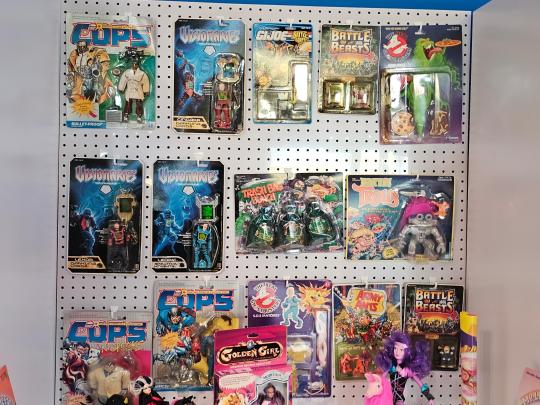


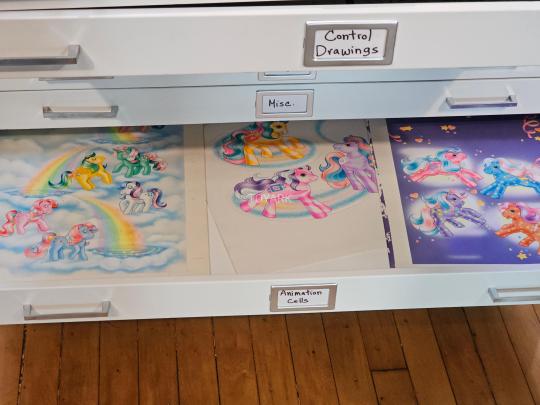
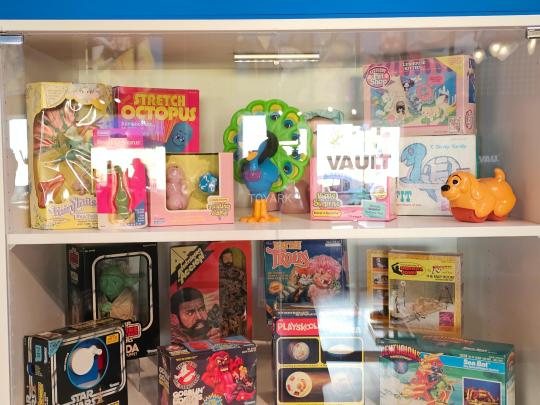



So at SDCC Hasbro has a HUGE Archive Display of their old Toys (and Kenner toys too) celebrating their 100th anniversary, Lots of dolls and misc stuff. I see Kenner Darci, Dusty, and Synergy from Jem on a weird Lama for starters. Lots of cool stuff here.
#Hasbro Archive#SDCC 2023#Hasbro Booth#Jem#Jem and the Holograms#Darci#Kenner Darci#Synergy#Dusty#Dusty Doll#My Little Pony#Kenner#Hasbro Dolls
60 notes
·
View notes
Photo

every time
#i know in the grand scheme of things this probably wasnt suppose to be taken so seriously#but out of the past recontextualizes the entire jem series as a whole#jem starts and ends with a fathers love#fucking help me#jem and the holograms#synergy#show jem
95 notes
·
View notes
Text


#oh dee#trans#nonbinary#queer#hopefully last few interviews for awhile at least#music#dance gavin dance#synergy
66 notes
·
View notes
Text

Here's Synergy! Trivia time. She was named on May 6th by Emmet Benton in the episode Out of the Past. First of the 4 bonus characters from my JEM Fashion Book.
patreon | shop
#lynndylee#synergy#JEM#jem and the holograms#idw jem#jem art#fanart#my art#artwork#digital#drawing#sketch#quick sketch#jem cast birthday
68 notes
·
View notes
Text





This 80's cartoon is called Jem. It's truly, truly, truly outrageous.
Jem is Jerrica's drag persona and she uses light constructs as makeup and couture.
Your argument is now invalid. lol

The songs, makeup, costume changes and nonsensical teen drama / history plot (holes) and more glitter and pink than a collision between a Kylie's and a Nicki's show, gave joy, laughter (and even visibility, representation) and also dreams of slay on a stage to so many kids.

And now you are truly, truly, truly gay. 😉😂
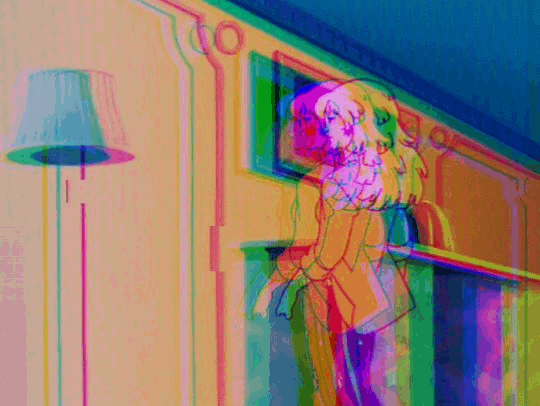
Example of a conservative dying of queer confusion and fabulousness. 😀
#gif#jem and the holograms#so pink#synergy#jerrica benton#aja leith#shana elmsford#kimber benton#80's#80s aesthetic#glamour#glam rock#pop culture#synthwave#waporwave#solid light constructs#hologram#queer#drama#romance#the misfits#we all born naked and the rest is drag#drag#pop icon#gay icons
18 notes
·
View notes
Text

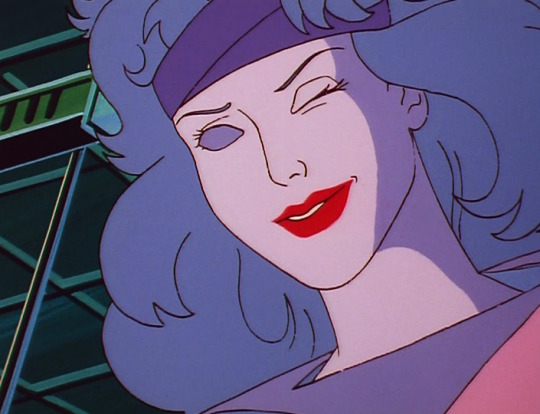
106 notes
·
View notes
Text
Cringetober:
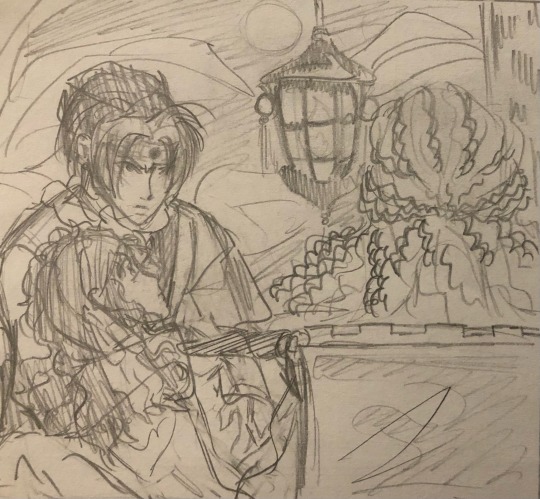
Day 9: Rarepair 😈 Asagi and Sarasa from Basara
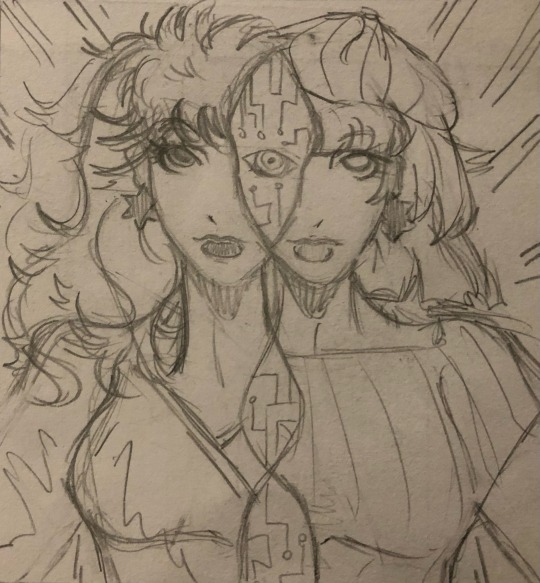
Day 12: Niche Interest - Jem and the Holograms ! And 80s doll/toy media
#my art#art#cringetober#legend of basara#basara#shoujo#jath#jem#jem and the holograms#jerrica benton#synergy#ship art#80s
27 notes
·
View notes
Text
What if you were a Celebrity? (Pick-a-card) 🏆🎭🎬🎤🩰🎹
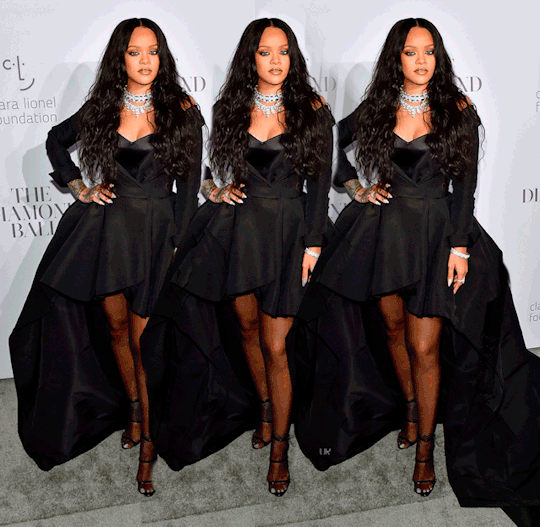
✨✨✨✨✨✨✨✨✨✨✨✨✨✨✨



✨✨✨✨✨✨✨✨✨✨✨✨✨✨✨
Pile 1

Tarot Cards: 3oWrv, 8oCrv, QoS, Strength, High Priestessrv, 10oWrv, 2oCrv, 4oPrv
Fans: Your fans would be tough critics on you. You may leave your fans disappointed in you and, the outcome for your career. Or they may be disappointed with where you are in your career. You and your fans may be into luxury items.
Celebrity Friends: They will be a bit judgmental of others or of you. They may view you as lacking confidence/having low self worth. They see you as not being truly happy just being yourself. You may feel used…like you can’t say no. Or you’re having a hard time adjusting to fame.
Career Path: Artist/Painter…something where you use your intuition and problem solve. -> Architect, Lawyer, Public Speaker, Judge, Therapist, Comedian, Tech Industry (mogul), Journalist
How GP Views you: The GP sees you as having a quiet inner strength. They see you as brave and an unwavering truth teller/exposer. They see you as having overcome a variety of obstacles.
How will you become famous: You determination alone will be the main reason. The vitriol you have for lack of truth. You will become famous for airing out someone who wronged you and/or you fell out with. You will speak about how you doubted yourself because of them. This may be a family member, friend, lover, business partner, etc…someone close, you thought you could trust withholding secrets, lies, and money. This being why you fight for honesty and truth.
Love Life: There will be many, many, many ups and downs as well as turmoil in your relationships. Due to public perception I heard. You will find yourself with many suitors who you’re incompatible with. There may even be a divorce or break up that happens in the public. You may have suffered abuse.
Where you will be famous: Santa Domingo, Places often known for the damp dryness. Places where the people have suffered many betrayals. South Africa, London(UK), Angola, U.S.A, Gambia, Central South America
Awards/Achievements: Many of the Awards you receive center around your giving nature…helping out people financially….humanitarian awards ( This was a mistake my bad 🤧)
How you feel: You will fell stable and grounded financially. You will wish for more tact and diplomacy within your profession…especially when it comes to authority. You will be reclaiming the power stolen from you.
Pile 2

Tarot Cards: The Foolrv, KnoPrv, 3oP, The Emperor, 5oP, 8oC, AoCrv, 4oP, 9oP
Fans: Your fans may viewed as reckless and careless where it concerns you. Especially when you or them comes under attack. They’re viewed as irrational. Your fans may view you as having distractions in your life. They view you as hopeful.
Celebrity Friends: A lot of your celebrity friends will be financially well off, stable, rich, or wealthy. They will help you in your career. They are quite generous; They have power/control but use it for good. They see that you love what you do and, they look forward to working with you.
Career Path: Doctor(Obstetricia), you may deal with negligence with other people in your chosen path…Model Agency, Actor, Performer, Singer, Dancer. You may deal with unskilled people who you out-perform yet play second fiddle to. Try not to overwork yourself when you don’t have to. Fashion Industry(Designer) & Police officer. Which ever it is you WILL SUCCEED!!
How GP views you: They feel like your aggravating but, they don’t really know you. This is just how you come off. They may see you as aggravated all the time. They see you as independent and extremely wealthy. You may have a pregnancy(To those who can) or the birth of a business which has brought you great success. They see you as having a high standing within your industry as well. You could be everywhere Billboards, commercials, TV, movies. That may be where the annoyance is coming from.
How will you become Famous: Through apprenticeship, or studying under someone, or at an institution. Your hard work and skill will be notice by someone important in your industry or by and agency. Your level of commitment shows within you work and your ability to show up. You may team up or collab with a group of people and that project will shoot you to stardom. Immediately!! You’re extremely determine but will have the help of others.
Love Life: There may be minor hiccups with some relationships you have. A lot of your partners may be un-empathetic to you and your life. They could view you like forbidden fruit, 1 bite and there done for. For a time many suitors may be invested with you only for sex or your body. They may be selfish only interested in what they can get out of you or from you. Some may see you as an unattainable beauty they want to conquer. However pile 2 you will meet the one for you and you will feel worshipped and adored by them. You may have to call off a few (oop) engagements before you find your one. (This may happen publicly) You could be constantly in the media for your relationships. You will be forced to look deep within yourself and find love son you may be loved. (This was way too long 😭)
Where will you be famous: places that have had many financial losses but used this to cultivate art. Where beauty and femininity are the focal point. (For masculines your masculinity) Places where people felt left in the cold. U.S.A, Brazil, Columbia, Senegal, Korea, Japan, Europe, Scotland, Montreal, Canada, Baltic States, Bolivia
How you will feel: You may feel this is a blank slate to start over. You will feel you need to work through past traumas and hurt. You will want to forgive and move on from your past in light of your new future.
Pile 3

Tarot Cards: The Hermitrv, AoP, PoW, Temperancerv, 9oSrv, Strengthrv
Fans: Their gonna be rooting for you success for sure. They will be pretty chill and laidback. A lot of them will be attractive? ✨💋 Or they will find you attractive. They feel like you heart in no longer in it or you feel discontent with your work…or within your field. They see you as stagnant. Their rooting for you to make a comeback.
Celebrity Friends: They see you as being the master manifestor. They could use you for your clout or recognition. They see you as stable within you career/finances…to the point where they feel you can take bold chances and not be held back. They may feel like your constantly trying to reinvent yourself. Some may steal your swag or ideas from you but fail to replicate. (You cannot compete where you don’t compare) Most will be fake towards…you will see this and cut them off ASAP! You will have few celebrity friends because of this. Those that are real friends of yours will actually help you even financially if you need it. They may want to invest in you. For some of you…you may even have an affair with one of them.
Career Path: Your career path will be a part of your destiny. For some of you, this is how you meet your soulmate. Aesthetician, Fashion Blogger, Beauty Guru, MUA, Stylist, Museum Curator, Art Auctioneer, Agent, Manager, Business Owner, Model, Actress (Feminines), YouTuber,Magazine Editor. A place where your allowed to be a free thinker, playful and confident. You may be the youngest there for some of you.
How GP Views you: They see you as a hard worker, the kinda “pull yourself up by the boot strap” mentality. They believe you worked for everything you own. They see you as a role model for kids and adults alike. They feel at times you a bit immature because of your playful nature…like you don’t take things seriously often. They see you as lacking balance, you often get into arguments because of your one-sided beliefs or because your beliefs are so out of the ordinary. Some of your actions are seen as reckless and stupid. They feel you should do better because of you being viewed as a role model.
How you become famous: Viral Video…overnight success. By being vulnerable about self doubt you’ve experienced. This may be after a huge scandal that shot you to fame. But you used it as a stepping stool. (Some of you may resonate with pile 2) This was at a time where you were letting go and beginning to see the light at the end of the tunnel.
Love Life: “Through the darkness I saw you”. You will go through a lot of nostalgic connections. Where you are the center of your suitor’s attention. A lot of your relationships you’ll want to keep low key (For obvious reasons) but that never ends up happening. A lot of ur lover’s emotions run deep with you. Some may not be able to handle the spotlight or you having the spotlight. Your like a dream for many of them…gone as soon as you came. You may cook or they may cook for you. There is a lot of empathy for your feelings and passions.
Where will you be famous: Norwegian, Iceland, New York, Bronx, Chicago, Mexico, Russia, Yugoslavia, Prussia, New Zealand, Newfoundland, Australia, Phoenix, California, Gambia, Mozambique, Madagascar, France. A lot of colder areas or places with higher levels of heat.
How will you feel: You may feel like everyone’s always trying to find out/know tea about you. Due to this you’re careful about who you give your energy to. You are quick to energetically block someone. You don’t change for others you just walk away from them
Call me beep me if you wanna reach me…💃🏾🎤🎹📱📞☎️🤳🏾
@youthnighttarot ~ Tumblr
[email protected] ~ Email
youthnighttarot ~ YouTube Channel
youthnighttarot ~ Patreon Exclusives
New PAC posted for night fairies check it out
#free tarot#divine#pac#pick a card#pick a pile#spiritual vibrations#spiritualawareness#pick a picture#actors#clarity#synergy#free readings free pick a card free tarot 18+ tarot tarot tarot reading tarot deck tarotblr tarottribe taroteverydamnday#pick an image#pick a photo#tarotoftheday#tarot tumblr#tarot reading#tarotcommunity#tarottribe#tarot#balance#celbrities#understanding#spiritualpath#free spirit#spirit#spiritualism#besties#powerful
361 notes
·
View notes
Text
SYNERGY (2/12)

SYNOPSIS: Tatianna "Tati" Mason, an avid John Boyega fan, is caught in a thunderstorm one night. A lightning strike transports her to an alternate universe and to her astonishment, she soon discovers that she is dating John Boyega himself. In this magical realm, she experiences firsthand the love and affection he exudes on-screen, but now it's directed at her. As she experiences the enchanting world of her dreams, she navigates the intricacies of being in a relationship with a celebrity she idolizes. She learns the realities of John's life beyond the public eye, the pressures he faces, and the genuine person he is beneath the fame. Eventually, Tati must grapple with the inevitable: staying in this alternate reality or returning to her own world.
PAIRING: John Boyega x Tatianna "Tati" Mason
WARNINGS: drama, angst, cursing, explicit sexual content, not-so-glamorous life in the entertainment world. RATED M (18+)
TAGLIST: @melaninpov, @melanin-goddess-world, @cocobutterqwueen, @judymfmoody, @blackreadersatrisk, @merranerra, @life-in-the-slut-house, @hopefulcyclestarlight, @shar74nett, @goldieccentric, @mochachocolatteyaya, @blackerthings, @wakandas-vibranium, @kemkem101 @whoopigol-barnes @ihearteddiemunson @hxneyclouds @blackerthings @certifiedlesbianbaddie
If you want to be added to the taglist, please let me know.
AUTHOR'S NOTE: This series is set from late 2022 (September) to the present.
Chapter II: Jumpin' The Broom?
After breakfast, and still reeling from her conversation with John, Tati went upstairs to get ready for their appointment at Boodles. Her mind was racing with questions.
What the fuck is she getting herself into? What life is this version of herself living?
She had always admired John, not just for his talent but for the values he stood for and the way he inspired others. The idea of exploring a future with him was both exhilarating and daunting, and not her life, at least not this version.
Tati entered the spacious en suite bathroom, her reflection in the oversized mirror looking back at her with a sense of wonder. This life was a stark contrast to her life in New York. The massive townhouse John owned dwarfed her small Brooklyn studio, not to mention living in Paris and attending her dream school; this was everything she'd ever wanted.
As she showered and got ready, her mind continued to race with doubts. That tiny voice in the back of her brain beckoned and tried to convince her that this was just an elaborate cosmic joke and she couldn't get caught up in her feelings. But her heart told her otherwise. The connection she felt with John was real, and this world, no matter how strange, was now a part of her reality.
Besides, she'd much rather be stuck with John's fine ass instead of being locked up in a psych ward. For now, and much to her delight, she had to play the role of the alternate Tati.
After dressing in a chic yet comfortable outfit she found in the closet, she notices a delicate crystal perfume bottle on the vanity. It emanated a scent that seemed oddly familiar, like a distant memory.
Vanilla and orchid with a hint of sandalwood.
Intrigued, she hesitates, then gives in to the impulse, spritzing a cloud of the fragrance around her. Suddenly, she feels a peculiar sensation, as if reality itself is shifting.
In an instant, Tati finds herself standing in a quaint, candlelit Parisian bistro. She's wearing a halterneck dress, and across from her is John, looking dashing in a silk shirt and matching pants. Their laughter fills the air as they share stories, their connection palpable.
"So how long are you in Paris?" he asks her.
"Two years," she says timidly.
"Then back to New York?" wonders John and Tati nods her head as she takes a languid sip of her wine. "That's a shame, but I figure something'll have you staying here longer than expected."
"Like what?" Tati inquired, curiously.
"Me," John quipped without a second thought. John reaches out to touch her hand, a gesture that sends a shiver of electricity through Tati. Their eyes meet, and in that shared gaze, there's a mutual understanding that goes beyond words: she was never going back to New York City.
Suddenly, like a snap of fingers, Tati is back in John's London home, the scent of the perfume lingering in the air. She's left breathless, the experience so vivid that it's as if she truly lived it.
"Holy shit," she whispered to herself as she set the perfume bottle back on the vanity. Whatever that moment was — déjà vu or something else entirely — changed her.
Am I having visions now? Flashbacks?
Shaking her head, Tati tried to push those thoughts aside in order to focus on putting on her shoes. Things were getting weirder as the days went on, and she had to play it cool and try to piece everything together.
"Babes?" called John. "The car's here."
"Coming!"
She made her way downstairs to find John waiting for her. His easy smile and a light kiss on her temple reassured her of any worry she had, and they headed out together to the awaiting car.
Boodles was an elegant boutique nestled in the heart of London, known for its exquisite jewelry. As they entered, the soft chime of a bell announced their arrival, and a friendly sales associate greeted them.
"Good afternoon," the associate said with a warm smile. "How may we assist you today?"
John stepped forward, his demeanor confident yet charming. "I've made an appointment with Peter," he said, casting a meaningful glance at Tati. "We're here to look at engagement rings."
Tati felt her cheeks flush, and she smiled in response. The associate nodded, understanding the significance of the moment. "Of course, right this way."
They were led to a beautifully appointed display area showcasing a stunning array of engagement rings. Diamonds of various cuts and sizes sparkled in the soft lighting, each one more captivating than the last.
The associate motioned for them to sit, and they both obliged; taking a seat on the most comfiest chaise lounge chair known to man.
"Peter will be out soon," the associate informed them. "Would you like anything to drink? Champagne perhaps?"
John let out a soft chuckle. "Water will be just fine for me." He glanced over at Tati and placed a hand on her thigh, squeezing it slightly. "What 'bout you, babes?"
"Uh..." she stammered then eventually shrugged. "Sure, I'll take a flute of champagne."
The associate smiled widely. "Of course, I'll be right back." The associate left quickly and within minutes, arrived back with their beverage orders and Peter in tow.
Peter was a rather tall man, much taller than John, with peppered hair cut low and almond-shaped brown eyes. John immediately stood to shake his hand and the two men exchanged a quick chat before sitting back down. Peter's eyes focused on Tati, and he gave her a welcoming nod.
"Is this the infamous Tatianna?" Peter asked John, smiling brightly.
"Yes, it is," John mentioned excitedly, wrapping a protective arm around her waist. "Future Mrs. Boyega."
Future Mrs. Boyega...I kinda like the sound of that.
"Welcome, Tatianna, we're very pleased to have you and John here today," spoke Peter as he gestured to the display of engagement rings. "As you can see, we have rings of various sizes and cuts. One of my personal favorites is the princess and pear cut. I think that the style is timeless and fits well for any bride-to-be."
As Tati examined the rings, she couldn't help but be drawn to a particular design. It was an elegant Ashoka diamond set on a band of white gold, a delicate and timeless piece. She pointed it out to John, her voice filled with awe. "John, look at this one. It's breathtaking."
John's eyes lit up as he examined the ring. "Is this the one, babes?"
"You have impeccable taste, Tatianna. It's stunning," Peter murmured, his gaze shifting between her and the ring. "This is a three-carat Ashoka cut diamond set in a vintage design with a beautiful white gold ring. We can try it on if you'd like."
"Oh, I don't think—"
"She'd love to," John interrupted, shooting her a quick look. With his furrowed eyebrows and pursed lips, Tati could easily sense that there was no way she could get out of this.
She was going to try on the ring, plain and simple.
Peter removed the ring from the display case and carefully placed it on the fourth finger of Tati's left hand — the ring finger. Tati marveled at the way it caught the light, casting a dance of rainbows across the room.
"It's beautiful," she breathed, her heart fluttering in her chest. "But, John, this... it's a lot. I mean, this is crazy, right?"
John's expression softened, and he took her other hand, his touch warm and reassuring. "Not really, babes. I knew you were the one since our first date. It's been a crazy year and a half, but I've never been more certain in my life."
Tati met his gaze, her eyes shimmering with emotion. In that moment, she felt a profound connection with him, one that transcended the boundaries of the reality she once knew. It was as if she were destined to be here, in this extraordinary alternate universe, making choices that would shape her future forever.
With a determined yet gentle smile, Tati looked back at the ring. "Then this is the one. It feels right."
John's face lit up with joy, and he leaned in to press a soft kiss to her temple. "I couldn't agree more, love." He gave Peter a wide, boyish grin. "Let's box this one up, mate."
"Excellent choice, Tatianna. Congratulations," Peter said. "I'll draw up the invoice and then we can get settled on payment."
As they finalized the details with Peter, Tati couldn't help but feel a sense of wonder. Reluctantly, she gave the ring — her ring — back to Peter to be wrapped and she sat back in the lounge chair to settle her erratic thoughts.
This cannot be my life, she thought in amazement. Holy-fuckin-shit.
John and Peter continued to chat, their voices trailing indistinctively as Tati slipped into a reverie.
"Babes?" called John, adoringly, his hand rubbing small circles on her back. "Should we get a matching necklace as well, or maybe earrings?"
"Sure", was her only response.
"Let's get both, Peter," John confirmed, winking suggestively in Tati's direction.
____________________________________________________________
Several hours and thousands of dollars later, Tati and John settled into the plush seats of Brasserie of Light for a late lunch. Tati's mind was still abuzz with the events of the day. The ring that they'd picked out felt like a promise, a symbol of the extraordinary turn her life had taken.
The soft glow of candlelight bathed the room, casting a romantic aura around them. John's eyes never seemed to leave Tati's, his gaze warm and unwavering. He reached across the table, his fingers entwining with hers.
"To us," John toasted, his smile radiant.
"To us," Tati echoed, her heart swelling with a mixture of gratitude and wonder. They clinked their glasses together, sealing the moment in time.
As the evening unfolded, the conversation flowed effortlessly. Tati couldn't help but marvel at the depth of John's character and his genuine kindness. He was almost too good to be true.
Then, in a moment of whimsy, John leaned in, his voice dropping to a conspiratorial whisper.
"Remember that rainy day in Paris?" he said, his eyes twinkling with mischief.
"That was..." she began, her voice barely above a whisper.
"Unforgettable," John finished, his eyes filled with a depth of emotion that rivaled her own. "I knew that you were the woman for me from that kiss alone."
Tati's breath caught in her throat. It was as if he had plucked the memory from her very thoughts. The world seemed to blur around her, and suddenly, she wasn't in the restaurant anymore.
She was back in Paris, the city of lights glistening around her. The rain fell in a gentle cascade, painting everything with a sheen of magic. Tati and John stood in the narrow street in front of her apartment building, their laughter mingling with the soft patter of raindrops.
John's warm hand gently cupped Tati's cheek, his touch a caress that sent shivers down her spine. His eyes bore into hers, a silent promise passing between them. And then, he kissed her.
It was a kiss that spoke of longing and connection, a kiss that tasted of rain and dreams. Time seemed to stand still, the world around them fading into insignificance. Tati's heart thundered in her chest, every nerve ending alive with electricity.
When they finally pulled away, their breath mingling in the cool air, Tati felt a sense of exhilaration wash over her. It was a moment she had treasured in her heart, and now, it was etched into her memory forever.
As the vision faded, Tati blinked, finding herself back in the restaurant, her heart still racing. She looked at John, her eyes wide with wonder.
"Oh...wow..."
"Yeah," he said, oblivious to what had happened to her. "I love you, Tatianna."
Still in shock of undergoing yet another vivid vision and John's profession of love, she mustered a garble of words together before saying those precious three words back to him.
"I love you too, baby."
The rest of the evening passed in joyfulness. They savored each moment, knowing that this was a chapter in their story that would be told for generations to come.
As they stepped out of the restaurant, the early evening air crisp around them, John turned to Tati, his gaze steady and unwavering.
"I have something I want to ask you, babes," he said, his voice filled with a quiet intensity.
Tati's heart skipped a beat, anticipation coursing through her veins.
"Would you come to South Africa with me?" John asked, his eyes holding hers in a steady gaze. "For the promotion of 'The Woman King'? I want you by my side, babes."
Tati's breath caught in her throat. South Africa, a new adventure, a new chapter in their shared story.
Without hesitation, she smiled, her heart brimming with certainty. "Yes, John. I'd love to."
And, it was in that moment, that Tati declared that she was never leaving this reality.
TO BE CONTINUED.....
#john boyega fanfiction#john baeyega#john boyega smut#john boyega fluff#they cloned tyrone#john boyega x black female reader#john boyega x black oc!#john boyega x reader#synergy#emjayewrites#john boyega
45 notes
·
View notes
Text




Sundays
#one size beauty#shopping#black woman aesthetic#black tumblr#afro latina#explore#pinterest#tumblr#elora#adidas#yeezy#synergy
14 notes
·
View notes